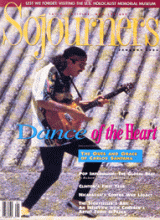As this is written, The Great Depression - produced by Henry Hampton's Blackside Inc., the team behind the epochal Eyes on the Prize series - has just started its four-week run on PBS. From the opening credit sequence onward, the series takes the social realism style of New Deal art as a touchstone and incorporates stills, newsreels, home movies, and other found footage to keep the picture moving along between interviews.
But the interviews themselves are the show. Whether the speakers are old-timers who were there or middle-agers speaking for their parents, the interviews manage to communicate the sense of desperation and possibility that both haunted and inspired America in those years.
The structure of the series works to enhance contemporary access to what is now, for Americans under 60, a very, very distant time. The Great Depression takes a storyteller's approach to history, moving through the decade chronologically, with emblematic tales of certain people or groups - autoworkers, politicians, sharecroppers - as the engine.
In the process The Great Depression also performs an important public service. If nothing else, it reintroduces into the arena of our common culture powerful images of ordinary, un-exotic "middle Americans" fighting for their economic and political rights and turning America around.
The series also brings back from the historical dead inspiring and pervasive images of Americans, in the midst of those very struggles, overcoming divisions of race, religion, and ethnicity. In the stories of the Bonus Army of World War I vets, the steelworkers union, and especially the bi-racial Southern Tenant Farmers Union, we see people putting aside old customs and prejudices in favor of shared ideals and shared self-interest.
Read the Full Article
